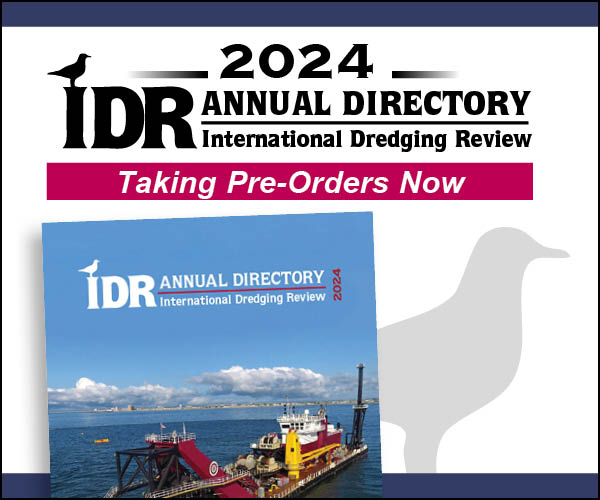Earthquake Brings Damaging Tsunami to Northern Chile
An 8.2 earthquake shook everyone in Northern Chile off their couches on April 1 and a large tsunami that followed shortly thereafter sent coastal residents running to the hills.
Strong infrastructure and a successful evacuation plan meant that while 80000 people were displaced there were only a handful of deaths. However the region’s maritime infrastructure is still trying to recover: two fishing wharves and one large port sustained major damage including some that will require bathymetric studies and dredging to remove shipwrecks and restore the seafloor to normal depth.
The 8.2 earthquake hit at 8:46 p.m. about 60 miles northwest of the Pacific Coast town of Iquique. A tsunami arrived about 20 minutes later and spread both north and south raising the water as much as seven feet in some areas.
On April 5 experts from the Port Works Administration (DOP) of Chile’s Ministry of Public Works (MOP) flew to Iquique to conduct a comprehensive analysis of the damage done by the catastrophe. They concluded that of the 10 fishing piers in the immediate path of the tsunami eight remained structurally sound despite being pummeled by rising seas. However the remaining two – Guardiamarina Riquelme Pier and Caramucho Pier – and the Port of Iquique sustained considerable damage.
Guardiamarina Riquelme Pier is located in Iquique and despite the onslaught of the tsunami its structure remained largely intact according to a report by the DOP. However some 80 percent of the boats that had been docked there were destroyed: some sank where they had been floating and others were thrown onto the pier and onto land damaging other structures. The result was a high concentration of trash and shipwrecks throughout the area including in the entrance channel to the pier and increased sedimentation that raised the level of the seafloor near the pier. All the structures on top of the pier were flooded and a central hall and several shops and warehouses were damaged.
Caramucho Pier about 60 kilometers (about 37.3 miles) south of Iquique fared even worse according to the DOP report.
“Caramucho Pier was among those that had the most damage from the earthquake and following tsunami principally because the ocean sucked up all of the boats that were on the shore and used them to beat everything in its path resulting in even greater damage” the report stated.
Because the sea was violently lashing the boats against the structures on land it destroyed a retaining wall that supported a road and also a fence that protected the pier. A statue of the pier’s patron saint was demolished and there was major damage to a fishing market where local catch was sold. The ocean also pulled up massive amounts of algae and covered everything on the pier and shore with it. In total 13 boats were damaged or destroyed.
But it was the Port of Iquique that sustained the most damage. Two of the port’s four berths were damaged to the point that they can no longer accept shipping traffic a big problem in one of the region’s busiest ports located in a free-trade zone. Berths 3 and 4 which are operated by International Terminal Iquique (ITI) escaped serious harm but Berths 1 and 2 operated by the Port Authority of Iquique (EPI) were injured enough to make them inoperative.
According to information provided by port officials concrete blocks that supported berths 1 and 2 were displaced by the waves which in turn crumbled the wharf’s cement pad. The wharves were displaced as much as 7.9 inches perpendicularly and 11.8 inches parallel. To make matters worse the seafloor under the concrete blocks “melted away” in places according to documents provided by port officials. The port’s breakwater also sustained damage in the form of cracks. The port’s other two wharves escaped major structural damage because they had recently been reinforced.
Officials said they are still conducting analysis and engineering studies to determine the best way to repair or reconstruct the piers. Preliminary studies of the sea floor conducted the day after the earthquake at Berths 3 and 4 – the sites that are still operative – indicated that the depth there was not affected by the tsunami. However the status for Berths 1 and 2 have not yet been conducted as those are still out of commission said port spokeswoman Leslie Keith Norambuena. But bathymetric studies and perhaps dredging will be called for before those berths are reconstructed and used she said.
In the meantime the port is struggling with the fact that its damaged areas are still congested with cargo and containers which is preventing them from doing a full analysis of the damage or stage repairs. To handle this problem it hired two ships in May to withdraw some 3500 empty containers from the damaged port. The port is also trying to remove all the loaded containers and other cargo from the wharves and storage areas although this has been difficult because it requires the cooperation of the cargo’s proprietors. Port officials have been constantly meeting with cargo shippers to handle this problem because it is only by clearing out all cargo that the port can begin a recovery Alfredo Leiton CEO of EPI said.
“All the stakeholders are meeting to monitor the state of the port and to plan and define the actions to come. It is of great importance that everyone involved takes every measure necessary especially the measure of removing containers which will be the most effective way to handle the congestion and then to move forward” Leiton said.



